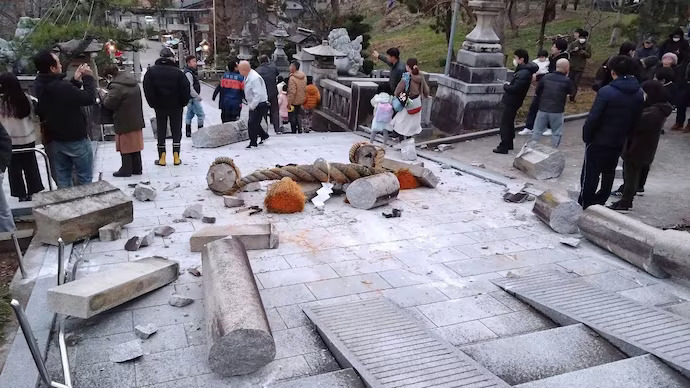Multiple earthquakes struck Japan, notably a 7.6 magnitude earthquake in Noto, Ishigawa prefecture, which produced five-foot tsunami waves. The impact led to the suspension of bullet train services and disruptions in communication networks and power supplies within the affected regions.
Earthquake in Japan: A 7.6-magnitude earthquake caused authorities to issue a tsunami warning. There were no early reports of damage.
News about the earthquake in Japan: According to media reports, north central Japan was struck by an earthquake on Monday with a preliminary magnitude of 7.6. Following a string of powerful earthquakes that rattled western regions, the Japan Meteorological Agency issued a tsunami warning for the coastal districts of Ishikawa, Niigata, and Toyama prefectures.
As per reports from Japanese public broadcaster NHK TV, Hokuriku Electric Power has confirmed its ongoing investigation into any potential anomalies at its nuclear power reactors. One of the earthquakes, which struck Ishikawa and neighboring prefectures, had a preliminary magnitude of 7.4, according to the Japan Meteorological Agency.
NOTICE OF TSUNAMI, PERSONS EVACUATED
Following the tsunami warning, waves up to five meters smashed the shore of Noto in Ishikawa, prompting people to flee coastal regions and seek higher ground or structures, according to Japanese public broadcaster NHK. According to the local Met office, up to 21 earthquakes with a magnitude of 4.0 were noted, the AFP news agency said.
According to The Japan Times, the JMA issued a warning, stating that anybody who experienced a tsunami of more than one meter were “highly likely to be unable to stand, with the possibility of death.”
As reported by Reuters, the JMA issued tsunami warnings for the western coastal districts of Ishikawa, Niigata, and Toyama prefectures. NHK relayed reports of waves reaching heights of up to three meters in Niigata and Toyama, among other prefectures.
Social media users shared photos of buildings trembling violently, sending people running under tables and chairs for safety, and roaring tsunami waves that threatened to submerge coastal regions.

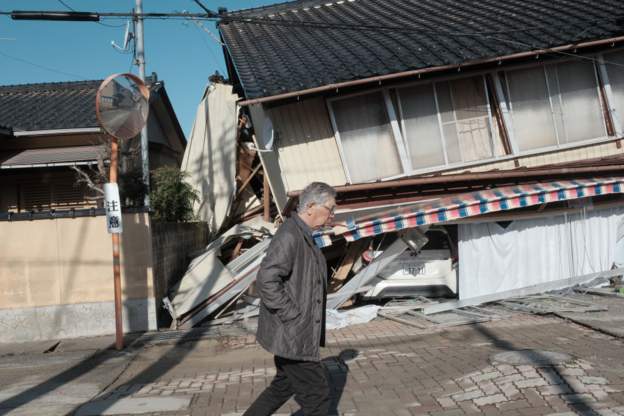
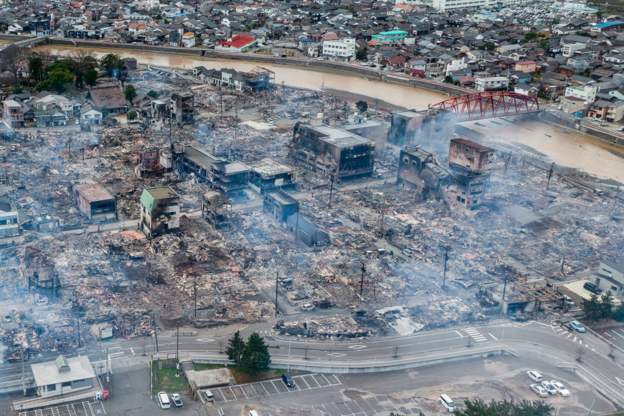
Numerous residences were completely destroyed by the earthquakes, while the impacted areas’ roadways developed fissures.
The governments of North Korea, South Korea, and Russia’s far eastern cities of Vladivostok and Nakhodka have each issued tsunami alerts. The JMA issued a significant tsunami warning specifically for Ishikawa, accompanied by lower-level tsunami warnings or advisories for the remaining western coast of Honshu island, as reported by The Associated Press. NHK has mentioned that ongoing updates to the warnings are being provided due to the sustained presence of tsunami waves, continuing beyond the initial alert that was broadcasted for almost an hour.
In response to the tsunami advisory, Japan’s Prime Minister urged the populace to adhere to the tsunami warnings, emphasizing the crucial provision of precise information to facilitate evacuations and preventive measures. Additionally, authorities were instructed to promptly evaluate potential damage and collaborate closely with local governments, prioritizing the preservation of human life and the rescue of individuals stranded in coastal regions affected by observed tsunami waves.
Prime Minister Fumio Kishida emphasized the importance of remaining vigilant for potential strong earthquakes in affected areas. He urged immediate evacuation in regions under tsunami warnings, as quoted by The Japan Times.
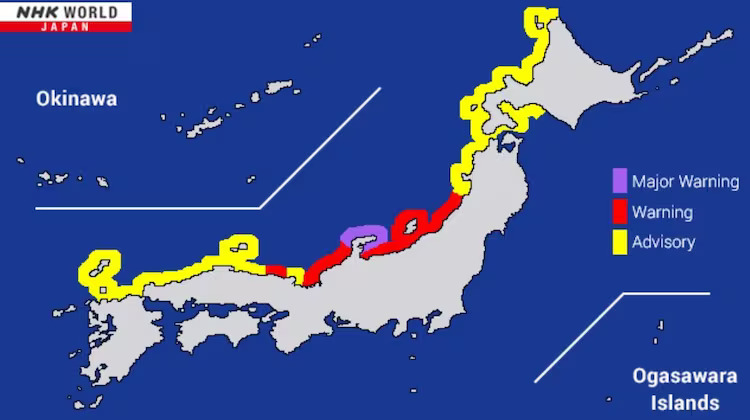
The Indian Embassy in Tokyo has established an emergency control room, providing contact details and email IDs for those in need of assistance.
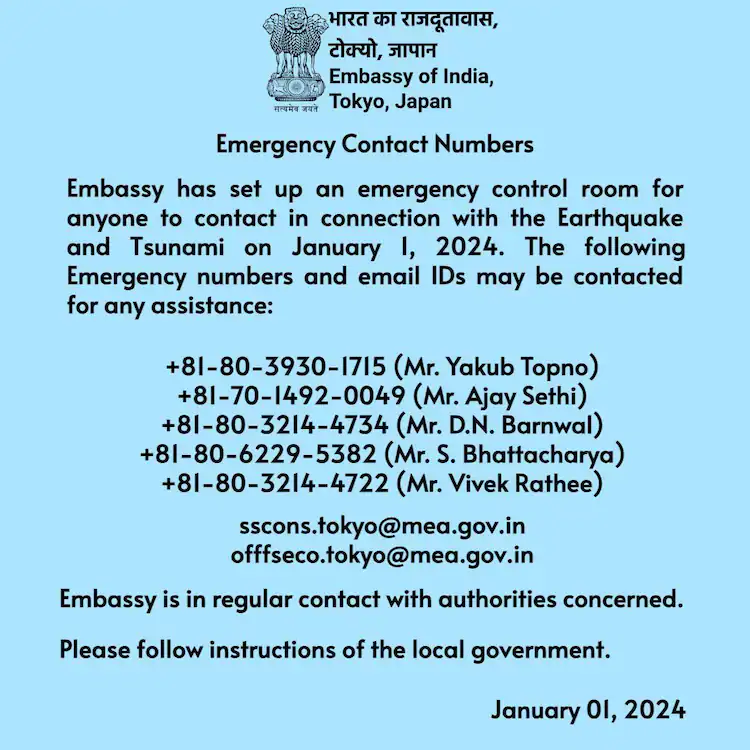
Japan’s susceptibility to earthquakes is due to its location along the Pacific Ring of Fire, where frequent tectonic plate movements occur.
The catastrophic events of March 11, 2011, saw a record-breaking magnitude 9.0 earthquake striking Honshu island’s northeastern coast, triggering a devastating series of tsunami waves.
This disaster claimed the lives of over 18,000 individuals and instigated a nuclear crisis at the Fukushima Daiichi Nuclear Power Plant, which suffered inundation from tsunami waves alongside the surrounding coastal areas.
